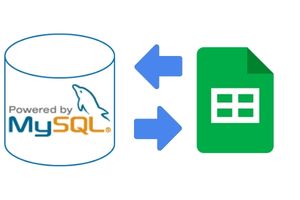Read and write data using Pandas Dataframe from different sources
We can even read or write to our Clipboard. So Next time if you like a table in any webpage then just select and copy the table and run few lines of standard Python code to save the copied table to a Excel or CSV file.
| Input to Pandas ( Reading to DataFrame ) | |
|---|---|
| read_csv | Reading data from csv file |
| read_clipboard | Reading data from Clipboard and storing in csv file |
| read_sql | Using MySql records to create Pandas DataFrame |
| read_excel | Reading data from Excel file |
| read_json | Reading data from Json file |
| read_table | Reading Tab separated data from .tsv file |
| read_sql_table | Reading from Database table |
| read_html | Reading Tabular data from Web page |
| read_pickle | Reading DataFrame object from pickled file |
| Output from Pandas | |
| to_clipboard | Data From DataFrame copied to clipboard |
| to_csv | Saving data to CSV file |
| to_dict | Saving data to Dictionary |
| to_excel | Saving data to Excel file |
| to_json | Saving / output data in Json format |
| to_html | Saving DataFrame data as HTML table in file |
| to_pickle | Saving DataFrame data by pickling in a file |
| to_sql | Using DataFrame managing MySql database |
| to_string | Saving DataFrame data to String or in a file |
| insert | Add data to MySQL table from DataFrame |
Data Transfer from Google sheets to MySQL and vice versa
 By using Pandas DataFrame we can transfer data from MySQL database table to Google sheets and from Google sheets to MySQL.
By using Pandas DataFrame we can transfer data from MySQL database table to Google sheets and from Google sheets to MySQL.Data Transfer between Google sheet and MySQL
Creating XML file by Exporting data from Excel file
1. Importing Required Libraries
import pandas as pd # For reading the Excel file
import xml.etree.ElementTree as ET # For creating and manipulating XML files- Pandas: A powerful library for handling structured data like Excel and CSV files.
- xml.etree.ElementTree: A Python library for creating and editing XML files.
2. Loading the Excel File
# Step 1: Load the Excel file
excel_file = "E:\\testing\\python_dtl.xlsx"
# Replace with the path to your Excel file
output_file = "E:\\python_dtl.xml"
# Replace with the desired output file name
data = pd.read_excel(excel_file) # Load the Excel file into a Pandas DataFrame- Excel File Path: Specify the path to the Excel file you want to convert to XML.
- read_excel(): Reads the Excel file into a Pandas DataFrame for easy manipulation.
3. Creating the Root Element
# Step 2: Create the root element for the XML file
root = ET.Element("root") # Root element for the XML file- ET.Element: Creates the root element of the XML file.
- Root Element: Acts as the parent node for all data rows in the XML file.
4. Iterating Through Rows and Creating XML Elements
# Step 3: Iterate through each row in the DataFrame and create XML elements
for _, row in data.iterrows():
# Create a parent element for each row
row_element = ET.SubElement(root, "row")
# Create child elements for each column
for col_name in data.columns:
col_element = ET.SubElement(row_element, col_name)
col_element.text = str(row[col_name]) # Add column value as text- iterrows(): Iterates through each row of the DataFrame.
- ET.SubElement: Creates child elements for the XML structure based on column names.
- Child Elements: Each column in the DataFrame becomes a child element under its corresponding row in the XML.
5. Writing the XML File
# Step 4: Create an XML tree and save it to a file
tree = ET.ElementTree(root)
tree.write(output_file, encoding="utf-8", xml_declaration=True)
print(f"XML file '{output_file}' created successfully!")- ET.ElementTree.write(): Saves the XML tree to a file with the specified encoding and XML declaration.
- UTF-8 Encoding: Ensures compatibility with most systems and languages.
- Output Confirmation: Prints a success message with the output file name.
import pandas as pd
import xml.etree.ElementTree as ET
# Step 1: Load the Excel file
# Replace with the path to your Excel file
excel_file = "E:\\testing\\python_dtl.xlsx"
output_file = "E:\\python_dtl.xml" # Replace with the desired output file name
data = pd.read_excel(excel_file) # Load the Excel file into a Pandas DataFrame
# Step 2: Create the root element for the XML file
root = ET.Element("root") # Root element for the XML file
# Step 3: Iterate through each row in the DataFrame and create XML elements
for _, row in data.iterrows():
# Create a parent element for each row
row_element = ET.SubElement(root, "row")
# Create child elements for each column
for col_name in data.columns:
col_element = ET.SubElement(row_element, col_name)
col_element.text = str(row[col_name]) # Add column value as text
# Step 4: Create an XML tree and save it to a file
tree = ET.ElementTree(root)
tree.write(output_file, encoding="utf-8", xml_declaration=True)
print(f"XML file '{output_file}' created successfully!")Explanation of the For Loop
The following for loop is a critical part of the code that processes the DataFrame and generates the XML structure:
for _, row in data.iterrows():
# Create a parent element for each row
row_element = ET.SubElement(root, "row")
# Create child elements for each column
for col_name in data.columns:
col_element = ET.SubElement(row_element, col_name)
col_element.text = str(row[col_name]) # Add column value as text
Explanation:
-
data.iterrows(): Generates an iterator over the rows of the DataFrame. Each row is returned as a tuple containing:
- The row's index (stored in `_`, not used here).
- A Pandas Series object (row) representing the data of the row.
Example: If we print row for a DataFrame with the following data:
| Name | Age | City | |-------|-----|--------------| | John | 30 | New York | | Alice | 25 | Los Angeles |The output of print(row) during the first iteration will be:
Name John Age 30 City New York Name: 0, dtype: object - ET.SubElement(root, "row"): Creates a new XML element named row under the root element for each row in the DataFrame.
- for col_name in data.columns: Iterates through the column names of the DataFrame to process each cell of the current row.
- ET.SubElement(row_element, col_name): Creates a child XML element for the column under the row element. The column name is used as the tag name.
- col_element.text = str(row[col_name]): Sets the text content of the XML element to the value of the current cell. The value is converted to a string to ensure compatibility.
Example:
If the DataFrame contains the following data:
| Name | Age | City |
|-------|-----|--------------|
| John | 30 | New York |
| Alice | 25 | Los Angeles |
The loop will generate the following XML structure:
<row>
<Name>John</Name>
<Age>30</Age>
<City>New York</City>
</row>
<row>
<Name>Alice</Name>
<Age>25</Age>
<City>Los Angeles</City>
</row>
This loop dynamically converts each row of the DataFrame into XML, making it highly flexible for varying data structures.
Sample student DataFrame DataFrame to SQlite table at Colab platform using to_sql()
SQLite table to DataFrame at Colab platform using read_sql()
Pandas read_clipboard() read_html() read_csv() read_excel() to_excel()

Subhendu Mohapatra
Author
🎥 Join me live on YouTubePassionate about coding and teaching, I publish practical tutorials on PHP, Python, JavaScript, SQL, and web development. My goal is to make learning simple, engaging, and project‑oriented with real examples and source code.
Subscribe to our YouTube Channel here
This article is written by plus2net.com team.
https://www.plus2net.com


 Python Video Tutorials
Python Video Tutorials